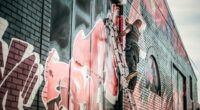Uninsured and under-insured are two terms that describe different types of insurance coverage. Uninsured individuals have no health insurance at all, while under-insured individuals may have some type of insurance but not enough to cover the full cost of their medical expenses.
Uninsured and under-insured; How they differ?
(Photo by Vlad Deep on Unsplash )

The main difference is that being uninsured means you have no health insurance coverage at all while being underinsured means you have some health insurance coverage but it falls short in certain areas.
being uninsured means that you are not protected against high medical bills should you need to go to the hospital or see a doctor. This could leave you with a very large bill that you would be responsible for paying in full. On the other hand, being underinsured means that your health insurance coverage does not fully cover all of your medical expenses. This could leave you with a smaller bill than if you were uninsured, but you would still be responsible for paying some out-of-pocket costs.
Some people choose to be uninsured because they can’t afford health insurance coverage or because they don’t believe in having health insurance. While there are risks associated with being uninsured, there are also risks associated with being underinsured. It’s important to weigh all of your options and make the best decision for yourself and your family.
What are the consequences of being uninsured or under-insured?
If you are uninsured or underinsured, you may be responsible for the entire cost of your medical care. This can include doctor visits, hospital stays, surgeries, and other treatments. If you cannot afford to pay for your care, you may be denied treatment or be forced to make difficult choices about your care. In some cases, people who are uninsured or underinsured have been known to go into debt or declare bankruptcy because of their medical bills.
What does underinsured mean in healthcare?
Being underinsured means that your health insurance does not cover all of your healthcare costs. You may have to pay for some of your care out of your own pocket. This can happen if you have a high deductible, copayments, or coinsurance. It can also happen if your insurance doesn’t cover certain services, like mental health care or prescription drugs.
For example, if a home is worth $200,000 but the policy only covers $150,000, then the home is under-insured by $50,000.
The Affordable Care Act (ACA) requires all health plans to cover 10 essential benefits. These include things like hospitalization, maternity and newborn care, and prescription drugs. However, some people still fall through the cracks. For example, people who only have coverage through a job may not have access to affordable coverage that meets their needs. This is why it’s important to shop around for a plan that fits your budget and provides the coverage you need.
What are the different types of insurance?
There are many types of insurance, but the most common are Health, Life, Auto, and Homeowner’s insurance.
Health insurance covers medical expenses for policyholders and their families.
Life insurance pays a death benefit to the policyholder’s beneficiaries in the event of the policyholder’s death.
Auto insurance covers damages to a policyholder’s vehicle and property, as well as injuries sustained by the policyholder or other people involved in an accident.
Homeowner’s insurance covers damage to a policyholder’s home and belongings.
Is it better to be over insured or underinsured?
The amount of insurance you need depends on many factors, including the value of your assets, the amount of risk you are willing to take on, and your personal preferences.
That said, there are some general guidelines you can follow when deciding how much insurance to carry. First, consider the value of your assets. If you have a lot of valuable possessions, such as a home or a car, you’ll want to make sure they are fully covered by your insurance policy. Otherwise, you could be left with a hefty bill if something happens to them.
Second, think about the level of risk you are comfortable with. If you are willing to take on more risk, you may be able to get by with less insurance. However, if you prefer to err on the side of caution, it’s better to be over-insured than under-insured.
Finally, take into account your personal preferences. Some people feel more secure knowing they have a large safety net in case something goes wrong. Others would rather save money on premiums and self-insure against smaller risks. There is no right or wrong answer here; it’s simply a matter of what makes you feel more comfortable.
Why are people uninsured?
There are a number of reasons why people may be uninsured. In some cases, people simply cannot afford to purchase health insurance. In others, they may be eligible for coverage but unable to enroll due to administrative hurdles or complex eligibility requirements. Some people may be unaware of their options or the importance of having health insurance, while others may have specific cultural or religious beliefs that prevent them from seeking coverage.
Whatever the reason, being uninsured can have serious consequences. Individuals without health insurance are more likely to forgo needed medical care, leading to poorer health outcomes and increased costs down the line. They are also at greater risk of financial insecurity in the event of an unexpected health crisis.
What are examples of uninsured costs?
There are many examples of uninsured costs, but some of the most common include:
• Medical bills: If you have to go to the hospital or see a doctor for an unexpected illness or injury, your medical bills will likely be higher than your insurance premiums. And if you don’t have insurance, you’ll be responsible for the entire bill.
• Dental care: Most dental insurance plans only cover a portion of the cost of dental care. So if you need a filling, crown, or other procedure, you may have to pay the entire bill yourself.
• Vision care: Many vision insurance plans only cover a portion of the cost of glasses or contact lenses. So if you need new glasses or contacts, you may have to pay the entire bill yourself.
• Prescription drugs: If you need prescription medication, you may have to pay the entire cost yourself if you don’t have insurance. Even with insurance, you may have to pay a deductible or copayment for your prescriptions.
What are three underinsurance indicators?
There are three primary indicators of underinsurance:
- Premiums that consume a large percentage of household income – A family that is spending a high percentage of their income on premiums is likely underinsured.
- High out-of-pocket costs – Families with high deductibles, co-pays, and other out-of-pocket costs are likely underinsured.
- Lack of key coverage – Families who lack key coverages like maternity care or prescription drug coverage are likely underinsured.
How do you determine if you are under or over insured?
The first is to consider the value of your assets. If you have a lot of valuable possessions, such as a home, car, or jewelry, you will need to make sure that your insurance policy covers these items in the event that they are damaged or stolen. You should also consider the amount of liability coverage you have. This is the coverage that protects you if you are sued for damages after causing an accident. If you have a lot of assets, you will need to make sure that your liability coverage is high enough to protect them in the event that you are found liable for an accident. Finally, you should consider your income and how much it would take to replace it if you were unable to work. If you have a high income, you will need to make sure that your life insurance policy is large enough to provide for your family in the event of your death.
What are some unnecessary types of insurance?
There are a few types of insurance that are generally unnecessary. Some of these include credit card insurance, private mortgage insurance, and trip insurance.
Credit card insurance is often a waste of money because the coverage is usually very limited and doesn’t cover much. Private mortgage insurance is usually only required if you have a down payment that’s less than 20% of the home’s value. And trip insurance is often unnecessary because most travel problems can be covered by your regular health and homeowners insurance policies.
Featured Image By – Photo by Tierra Mallorca on Unsplash









